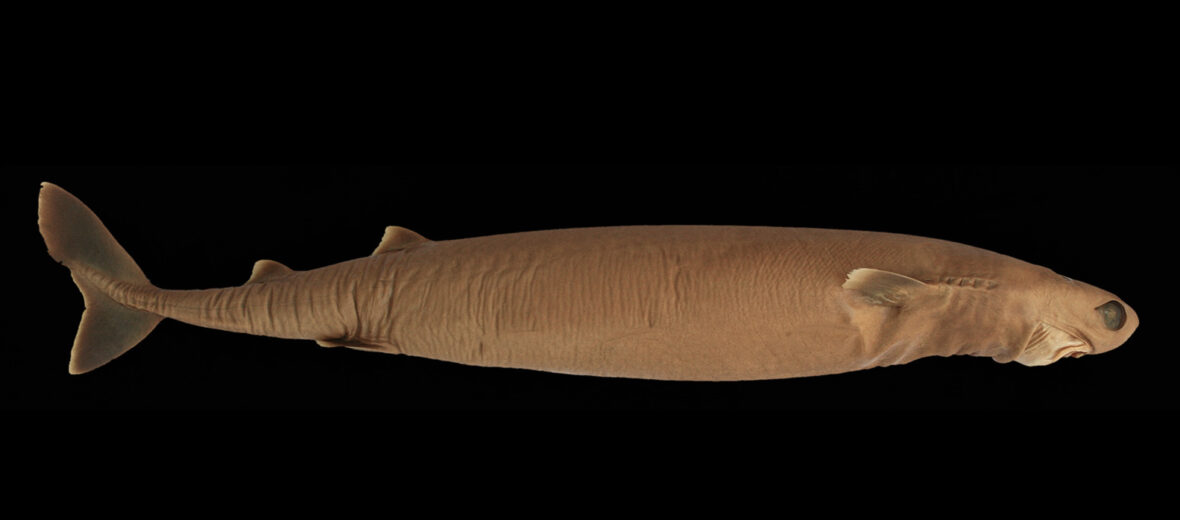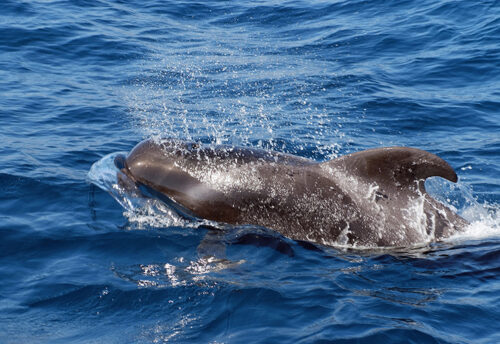
Actually belonging to the dogfish family the cookiecutter shark, aka cigar shark, is typically found in the warm tropical and temperate waters of the Atlantic and Pacific Oceans. They can be found at the crushing depths of up to 3,200 feet! These little sharks are notorious for their snatch and grab method of acquiring food. Due to the fact that cookiecutters are not favored as a food source plus their deep swimming habits, they aren’t typically caught in fishing nets or long lines. Cigar sharks are listed as Least Concern by the IUCN.
First the Stats…
Scientific name: Isistius brasiliensis
Weight: Up to 1.5 lbs.
Length: Up to 22 inches
Lifespan: Unknown
Now on to the Facts!
1.) First off, they have had 3 different scientific names: Tristius brasiliensis, Scymnus brasiliensis, and finally, Isistius brasiliensis.
2.) They get their namesake due to the cookie-shaped bite wounds left on their prey, that they sneak up to and bite.
3.) Cigar sharks are covered in a tight network of photophores. These are able to emit a greenish light called bioluminescence. This glow has been recorded lasting nearly 3 hours after their death.
4.) Their primary prey are dolphins, seals, tuna, whales, great white sharks, and stingrays. Although they will also eat crustaceans, squid, and even bite the occasional diver.
5.) These sharks are so feisty that they have even been known to attack submersibles, causing damage to sonar dishes.
But wait, there’s more on the cookiecutter shark!
6.) Using suctorial lips to suction onto its prey, the cookiecutter will then spin its body, using the row of sharp, serrated teeth on its lower jaw to remove a plug of flesh. This leaves in its wake a crater-like wound that measures up to 2 inches across and 2.5 inches deep. Ouch!
7.) Females are ovoviviparous. This means pups hatch from eggs inside the mother’s uterus and are then born live.
Did you know…?
These little critters can lose all their teeth at once. Most of these teeth are swallowed and used as additional calcium.
8.) The female will birth between 6 – 12 pups each season. They are born totally self sufficient.
Now a Short Cookiecutter Shark Video!
Also, check out the Critter Science YouTube channel. Videos added frequently!
Want to suggest a critter for me to write about? Let me know here.



